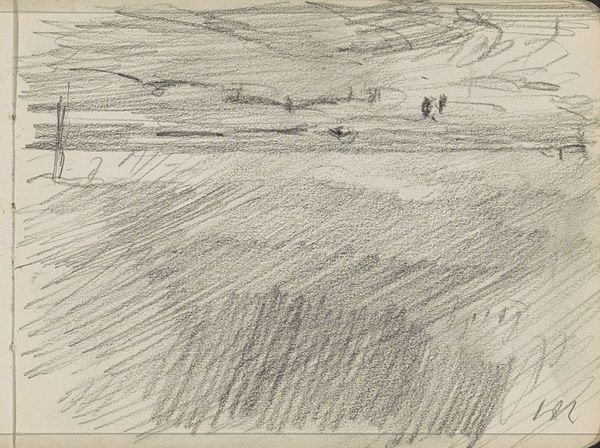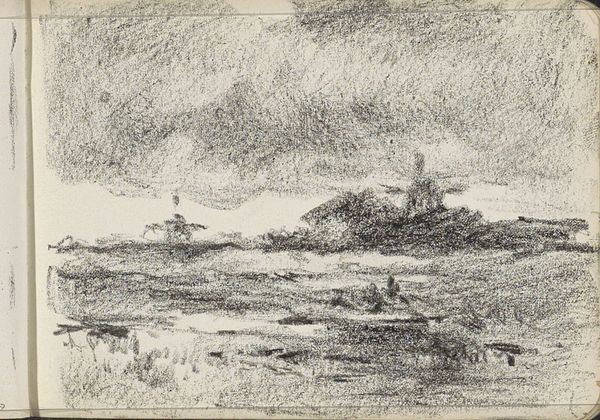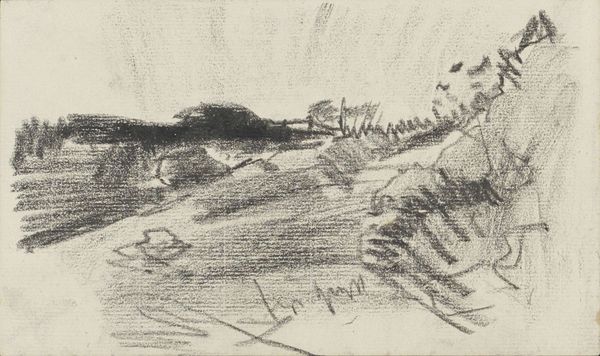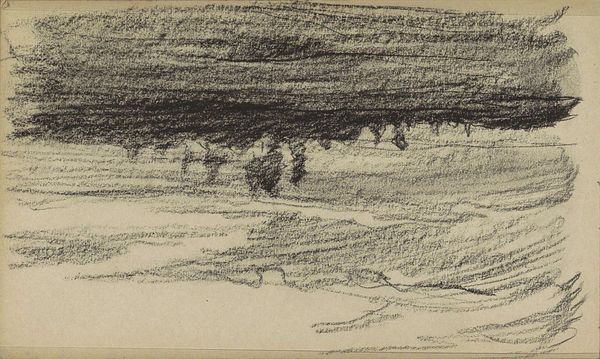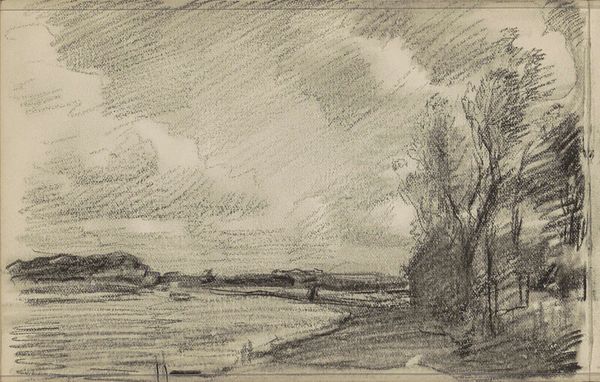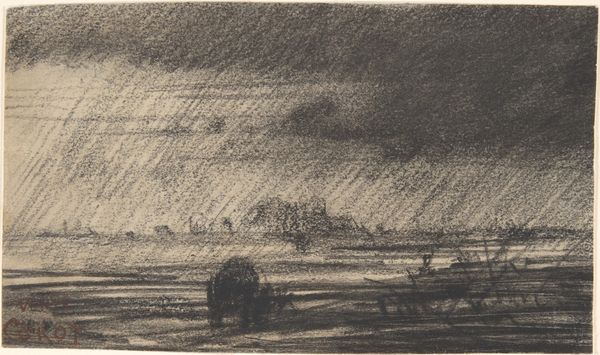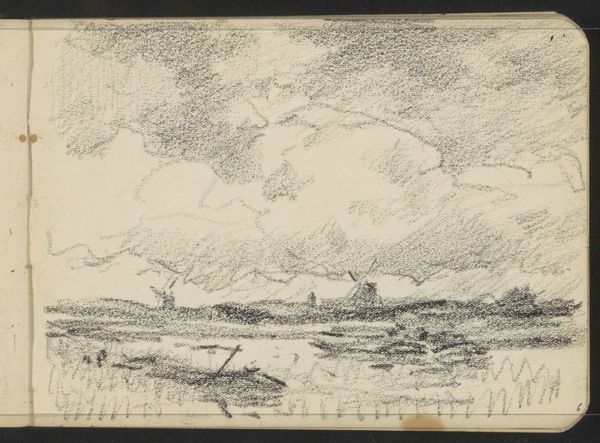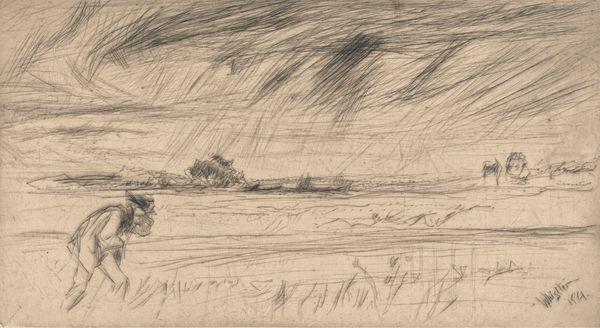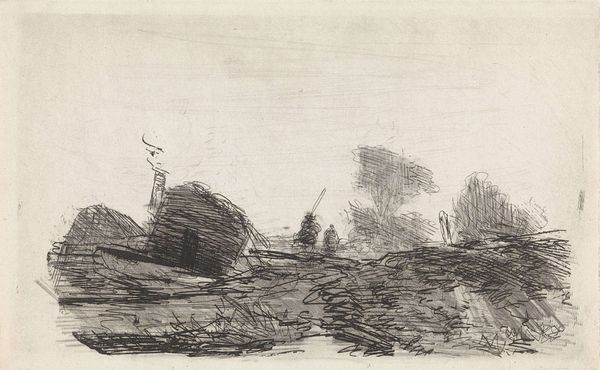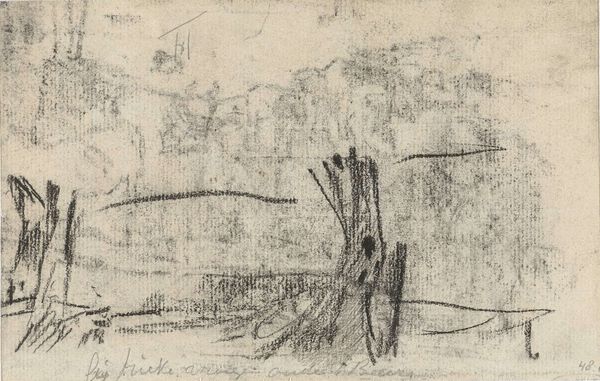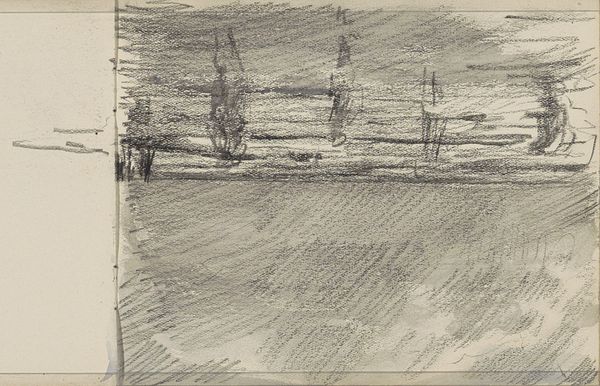
Dimensions: height 70 mm, width 130 mm
Copyright: Rijks Museum: Open Domain
Curator: Anton Mauve created this compelling landscape between 1848 and 1888. The artwork, simply titled "Landschap," which translates to "Landscape," can be found right here at the Rijksmuseum. Editor: My first impression is the somber mood. The graphite strokes feel incredibly direct. Almost hurried. Curator: Yes, the urgency! Mauve was part of the Hague School, a group very attuned to the harsh realities of rural life. These scenes, rendered with such clear economy of means, reflect a turn towards realism and an aesthetic rejection of idealism that can be interpreted as both a comment on the shift from agriculture to urban lifestyles but also an appeal to more authentic forms of self representation among an emergent urban proletariat. Editor: The application of the charcoal seems very specific. Look at the furrowed land. I find it really tactile – it speaks to the physical act of cultivating it. Do you think it also highlights the shift in the economy when so many more people became involved with manufacturing goods for others to use rather than working land themselves? Curator: It absolutely engages with that dynamic, this direct observation is key. Mauve’s landscape departs from idealizations of pastoral harmony so fashionable previously; instead, his engagement echoes larger debates on class, industrial labor, and what it meant to participate as equals within new and complicated forms of capitalism. Note also that Vincent van Gogh, who was taught by Mauve, clearly picked up similar ways of working. Editor: Definitely a link, there, thinking of how materials of art were developing during industrial advances and what sort of social critiques might be implied within them. I now sense almost an emptiness of being lost with these figures going to that vague cluster in the distance. I'm moved by the raw materiality and subdued tones of this simple drawing. Curator: Precisely; Mauve, through a seemingly understated sketch, quietly yet powerfully articulates complex historical and societal themes and the importance of reflecting on social transformation. Editor: Indeed; a deep dive into not just representation but also the physical manifestation of societal labor captured so directly.
Comments
No comments
Be the first to comment and join the conversation on the ultimate creative platform.
